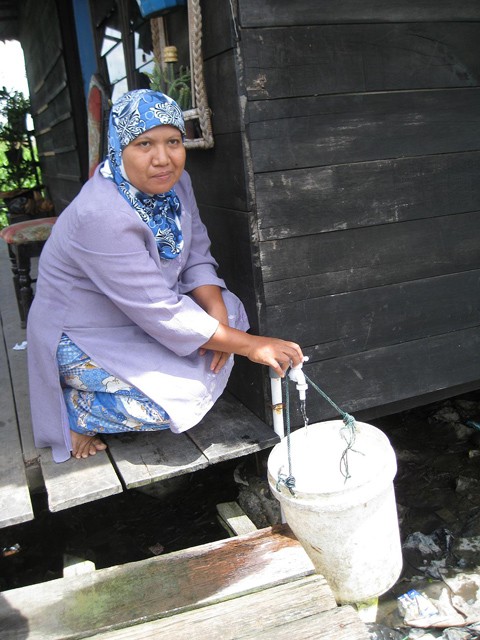- What We Do
- Agriculture and Food Security
- Democracy, Human Rights and Governance
- Economic Growth and Trade
- Education
- Ending Extreme Poverty
- Environment and Global Climate Change
- Gender Equality and Women's Empowerment
- Global Health
- Water and Sanitation
- Water and Development Strategy
- Advancing Water Supply, Sanitation and Hygiene
- Urban Sanitation
- Promoting Water Productivity and Efficiency
- Investing in Water and Natural Resources Management
- Enhancing Water and Disaster Risk Reduction
- Learning and Sharing in the Water Sector
- From The Field
- World Water Day
- Working in Crises and Conflict
- U.S. Global Development Lab

Over the last decade, the Millennium Development Goals for water and sanitation have represented a set of harmonizing objectives for donors, implementers and countries under which to unite and collaborate. In 2010, the world met the target for safe drinking water five years ahead of the 2015 Millennium Development Goals (MDG) target. The success of our cumulative efforts in meeting these goals is an encouraging milestone in the movement toward universal access to safe water. However, now is not the time to slow down, as nearly 800 million people still live without access to safe water. Through our Water and Development Strategy, USAID is working to expand on our success, learn from where we have fallen short, set new goals and adapt our efforts through improved and sustainable methodologies, innovative and scientific solutions and effective collaboration with governments and development partners.
USAID is helping to respond to these challenges by increasing access to cleaner sources of water. This involves:
- Addressing barriers to access at the country level;
- Building capacity and structures for sustainability at regional levels; and
- Enhancing our development reach and aid effectiveness through strategic global partnerships.
At the country-level, USAID works to improve the performance of service providers, whether small-scale, community-run or national, and focuses on the sustainability of service. We work to improve governance and regulatory arrangements, financial flows, behavior change and capacity, often called “software.” This enhances infrastructure, or “hardware” investments, and helps ensure the continuity and quality of service. People at the household level benefit from projects that focus on the safe treatment and storage of water supplies.
Regionally, USAID helps to strengthen the institutions and associations that underpin stability, sustainability and growth, including the Africa Ministers’ Council on Water, the Africa Water Association, the Middle East and North Africa Network of Water Centers and WaterLinks.
Globally, USAID is forging new and strengthened development partnerships, amplifying our reach and harmonizing our support. We have strengthened our collaboration with the Millennium Challenge Corporation and the World Bank and recently joined the global partnership, Sanitation and Water for All. We continue to work closely with the private sector, seeking ways to deepen its engagement in the sector.
Specific activities include:
-
USAID’s Sustainable Water and Sanitation in Africa (SUWASA) project in Nakuru, Kenya, launched a public prepaid water meter system project in 10 low income settlements of the city through a three-way partnership with the Government of Kenya Water Services Trust Fund and the local water and sanitation services company. Family Bank provided finance for the construction of the water point bases and staff training. The project is now benefiting more than 9,000 people.
- The USAID-funded Indonesia Urban Water, Sanitation and Hygiene (IUWASH) Project, is a 5-year effort designed to support the Government of Indonesia (GoI) in making significant progress towards achieving its safe water and sanitation Millennium Development Goal (MDG) targets by expanding access to these services. As of May 2015, IUWASH has helped 1,898,040 people obtain access to a safe water supply and an estimated 186,090 individuals gained access to improved sanitation. In areas surveyed, the per-unit cost of water paid by the urban poor has also decreased by an estimated 47 percent.







Comment
Make a general inquiry or suggest an improvement.